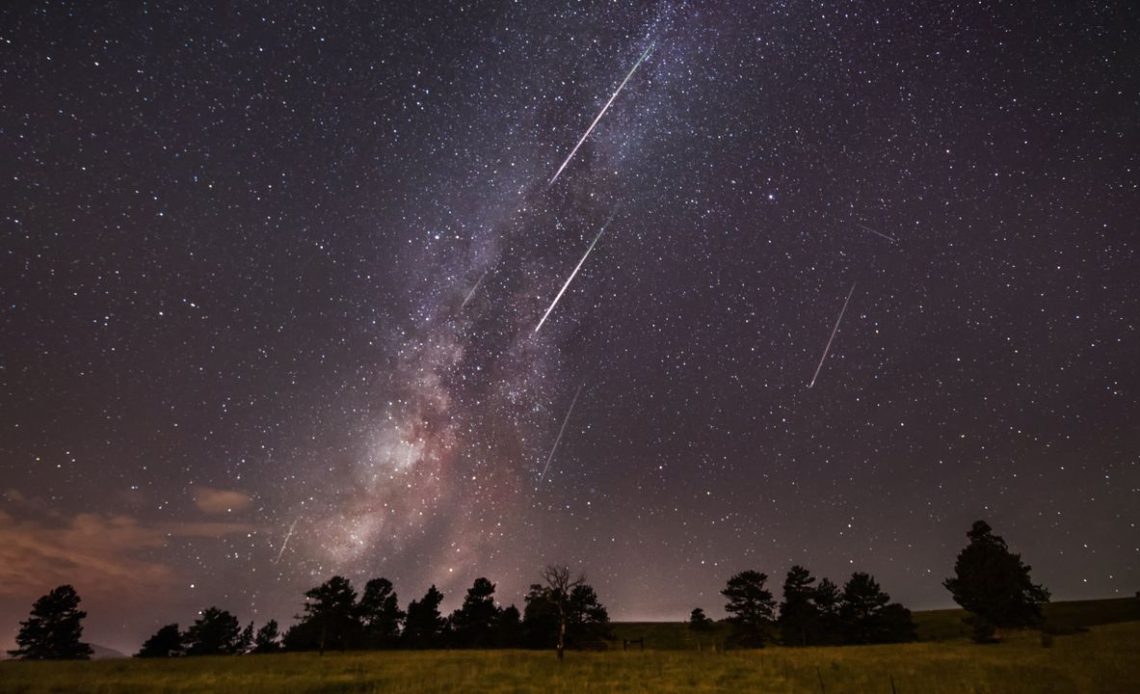
Night begins earlier in the northern hemisphere in October, and there are a host of celestial spectacles for astrophotographers this month. From a rising “Harvest Moon” to a photogenic passing of the moon through the stunning Pleiades open cluster, there’s plenty to capture in the night sky. As a bonus, there’s the Orionid meteor shower at the end of October, whose ‘shooting stars’ have an intriguing story behind them that always goes down well on social media.
Here’s everything you need to know about astrophotography in October 2025:
Sunday, October 5: Near-full Moon and Saturn in conjunction
There’s about to be a big, bright full moon — one of the most famous of the year — but there’s a reason for trying to catch it the night before it rises full-lit. Above east in dusk, the 98%-lit waxing gibbous moon will shine about three degrees above Saturn, itself big and bright — relatively speaking — after its opposition last month.
Read: When to photograph the moon.
Monday, October 6: Full Harvest Supermoon rising
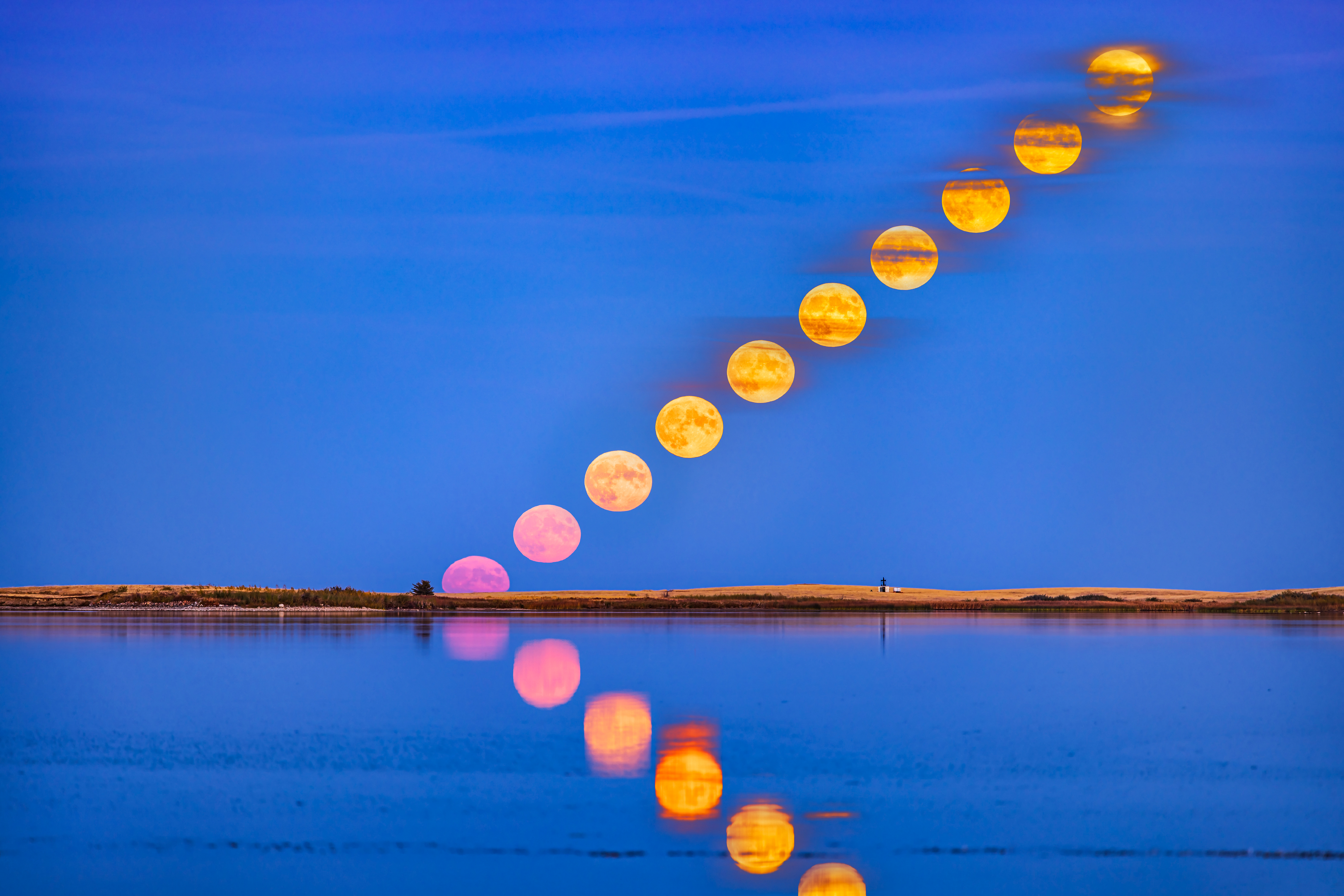
The first “supermoon” of 2025 is also the most famous. Usually, September’s full moon gets the “Harvest Moon” moniker, but since October’s is closest to the equinox, it receives the iconic name this year. More importantly, the moon will rise full in the east just after sunset in the west (use a moonrise calculator to find the exact time for your location).
Read: How to photograph the full moon
Thursday, October 9: Moon and the Pleiades in conjunction
About three hours after sunset today, an 87%-lit waning gibbous moon will rise while next to the spectacular Pleiades open cluster of stars, also called the Seven Sisters. Although it will be tempting to image, the moon’s brightness will overwhelm the image. It’s probably one for binoculars only.
Read: Astrophotography: How-to guides, tips and videos.
Monday, October 13 -Thursday, October 23: Dark sky window

If you live in the mid-latitudes of the Northern Hemisphere, October is when the hours of darkness get longer than the hours of daylight, but before it gets truly cold at night. The nights will have no bright moon to interfere with observations and imaging for around 10 nights from October 13’s 50%-illuminated last quarter moon phase through to the crescent moon on October 23.
Read: How to photograph the Milky Way
Sunday, October 19: A crescent moon, Venus and zodiacal light
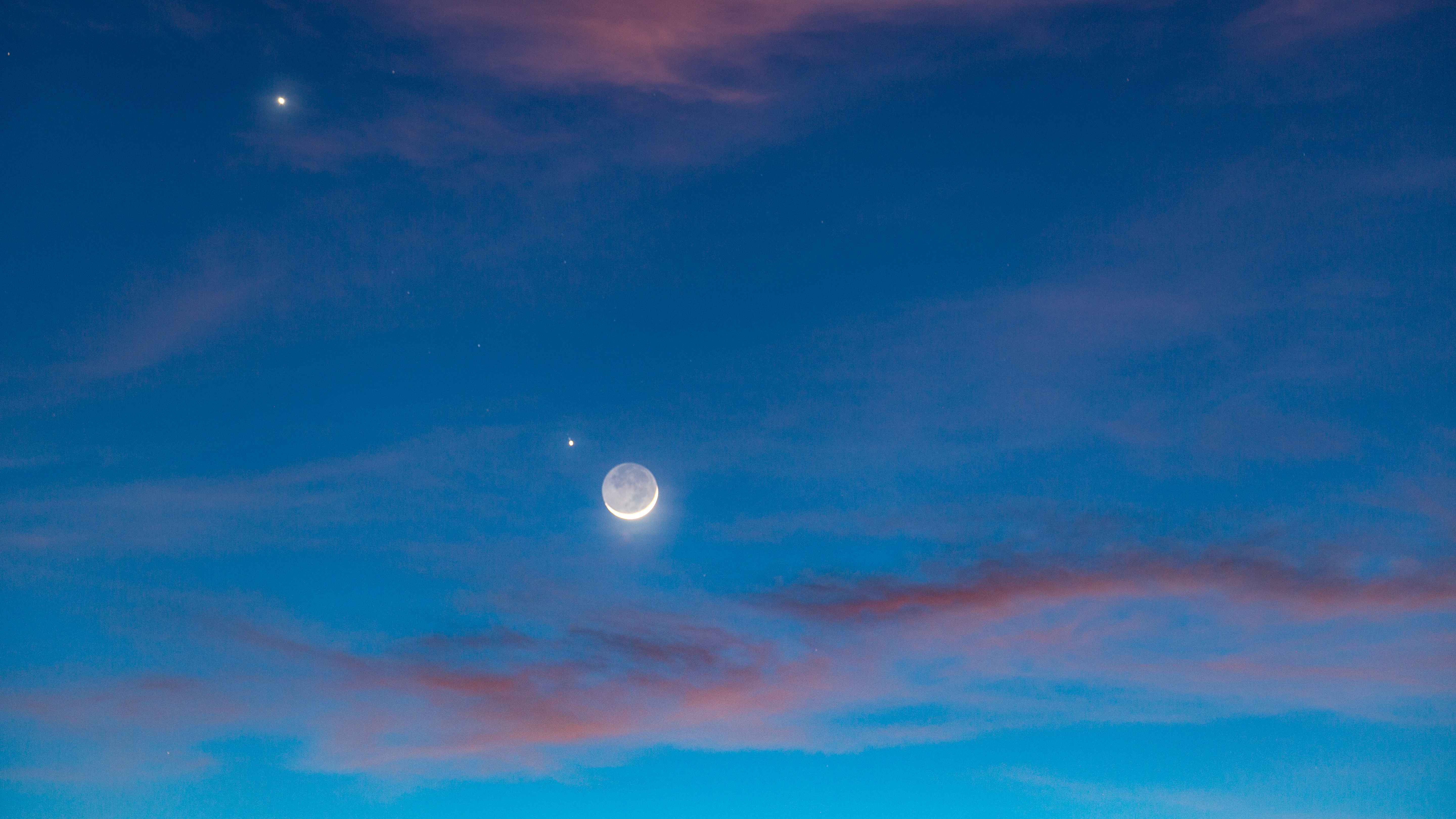
Get up at least an hour before sunrise this morning, and you’ll see, in the eastern night sky, the gorgeous sight of a 4%-lit waning crescent moon just four degrees to the upper-right of super-bright Venus. If you’re up even earlier, and in a dark sky destination, it’s a good morning to capture a triangular glow of light in the east above where the sun will come up. Termed the “false dawn,” it’s reflected sunlight from interplanetary dust orbiting the sun along the same plane as the planets, called zodiacal light.
Read: The best star tracker camera mounts
Monday-Tuesday, October 20-21: Orionid meteor shower peaks
Unlike August’s Perseids, the peak of the Orionid meteor shower will this year take place in moonless night skies. It’s not as prolific — only about 20 “shooting stars” are expected each hour during the overnight peak tonight, which will occur in the very early hours of October 21. Meteors will appear to come from the constellation Orion, though they can appear anywhere in the sky. The best way to photograph them is to leave a camera with a wide-angle lens on a tripod in continuous mode, hoping to catch one. Go for 30-second exposures.
Read: How to photograph a meteor shower
Thursday, October 23: A young crescent moon with Mercury and Mars
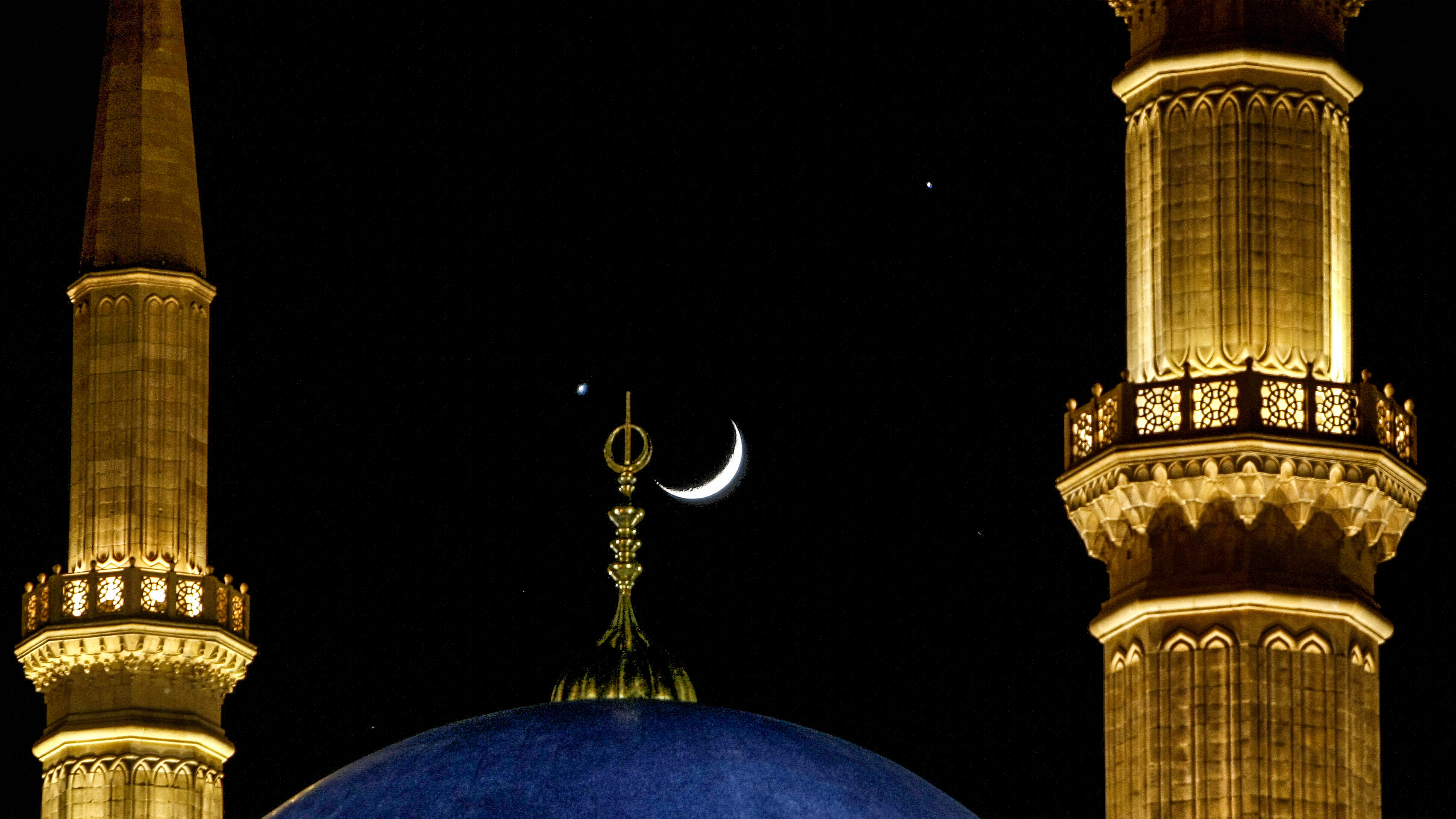
To photograph the slimmest possible crescent moon against the early twilight sky, be somewhere with a good view of the southwestern horizon just after sunset tonight. Your target is a 5%-lit crescent moon, with Mercury and Mars to its upper-right.
Read: The best lenses for astrophotography
Friday, October 24: A crescent moon and Antares
Now slightly brighter and easier to see, the still slim crescent moon will have moved beyond Mercury and Mars and be higher above the horizon tonight, just below red supergiant star Antares. You’ll see “Earthshine” on the dark region of the moon, something wide-angle lenses tend to natively pick up. You can try for a similar shot of “Earthshine” on Saturday, October 25 and Sunday, October 26, too, before the illuminated part of the moon grows so bright that it drowns out the delicate ‘Earthshine.’
Read: The best cameras for astrophotography
Shot of the month: Orionid meteor shower
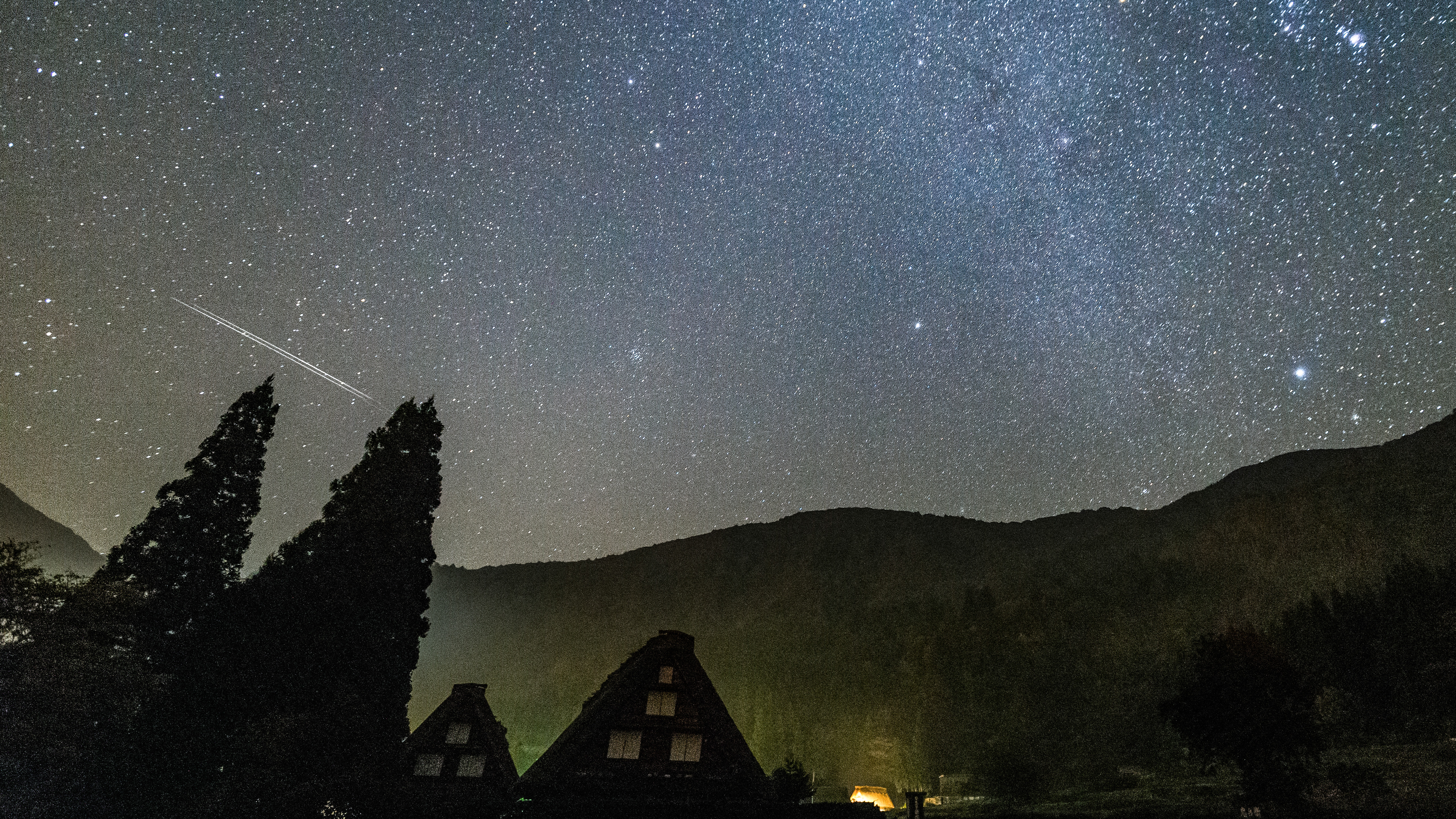
Expect between 10 and 20 ‘shooting stars’ from the Orionids meteor shower’s peak, expected in the early hours of Monday, October 21. They’re named after the region of the night sky where meteors strike the Earth’s atmosphere each year – the famous constellation of Orion. However, the more interesting story behind the Orionids is that they’re produced by dust and debris from Halley’s Comet striking Earth’s atmosphere. It was last in the solar system in 1986 and will return in 2061.
Since this isn’t a particularly prolific meteor shower, it’s one to photograph automatically. You only need a manual camera on a tripod, a wide-angle lens, 30-second exposures and an ISO of about 800. Experiment until you get a lovely, sharp, great-looking image of the night sky. Then, use an intervalometer or continuous mode and a manual shutter release cable in lock mode to take exposures after exposure. You can leave it to do its thing for many hours; Orionid meteors travel super-fast, but with long exposures, you should catch one or two. Since the Orionids will come from the east, orienting in that direction makes sense, though the ‘shooting stars’ can appear anywhere.
Read more:
Astrophotography: How-to guides, tips and videos
Astrophotography tools: the best camera, lenses and gear
Author: Jamie Carter
Source: DigitalCameraWorld
Reviewed By: Editorial Team



